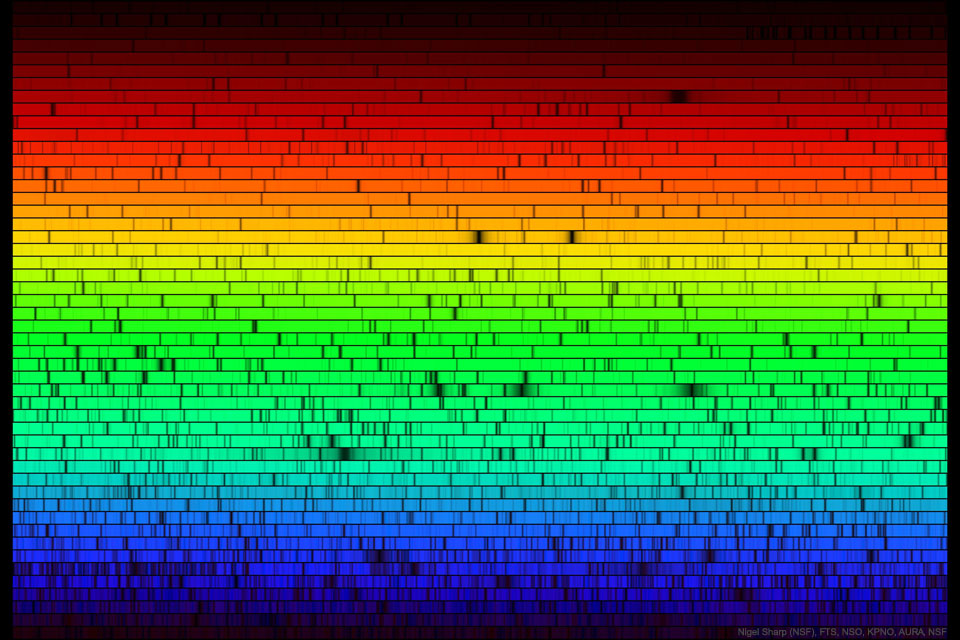2023年6月11日
The Sun and Its Missing Colors
Image Credit: Nigel Sharp (NSF), FTS, NSO, KPNO, AURA, NSF
Explanation: Here are all the visible colors of the Sun, produced by passing the Sun’s light through a prism-like device. The spectrum was created at the McMath-Pierce Solar Observatory and shows, first off, that although our white-appearing Sun emits light of nearly every color, it appears brightest in yellow-green light. The dark patches in the featured spectrum arise from gas at or above the Sun’s surface absorbing sunlight emitted below. Since different types of gas absorb different colors of light, it is possible to determine what gasses compose the Sun. Helium, for example, was first discovered in 1870 on a solar spectrum and only later found here on Earth. Today, the majority of spectral absorption lines have been identified – but not all.
Tomorrow’s picture: largest satellites
太阳消失的色光
影像提供: Nigel Sharp (NSF), FTS, NSO, KPNO, AURA, NSF
说明: 某些颜色的阳光为何不见了?没人能说个准。上图是太阳所有的可见光谱,它是阳光通过类似稜鏡的仪器后所产生的色谱。在这幅由麦克梅斯·皮尔斯太阳塔所提供的光谱里,第一个特征是:我们泛白的太阳虽然会发出各种颜色的光,但还是以黄-绿光最强。而这张主题光谱之所以会有暗线,则是因为太阳表面及其上方的气体吸收了下层发出之部分阳光。因为不同的气体会吸收不同颜色的光,所以我们得以反推太阳的气体成分。举例来说,氦就是在1870年首先发现于太阳的光谱中,后来才在地球上找到。到今日,绝大部分光谱吸收线的来源已知,不过,仍有部分暗线之出处不明。
明日的图片: largest satellites



